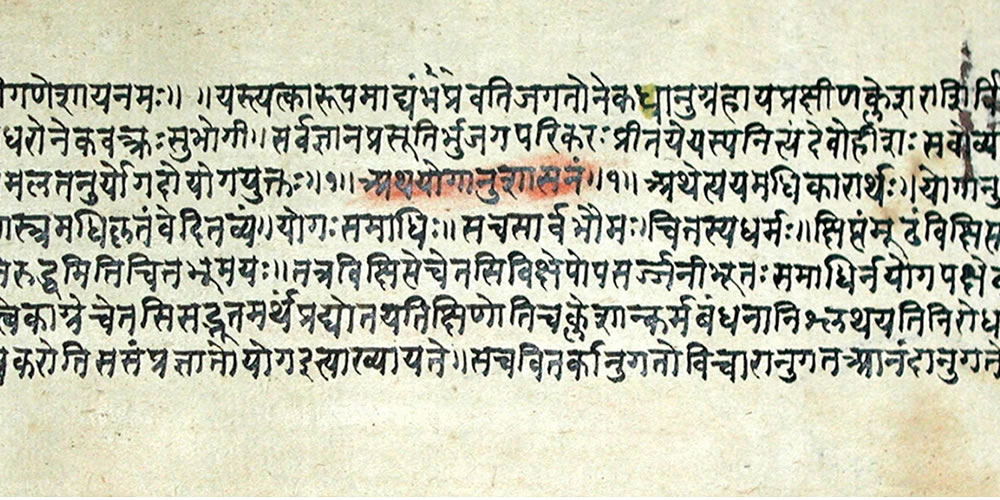The Yoga Sutras of Patanjali – Raja Yoga – Yoga of the Mind
In 196 short aphorisms, this classic work of Indian philosophy succinctly spells out how the mind works and how it is possible to use the mind to attain liberation. The Yoga-Sutra is a road map of human consciousness and a helpful guide to the mental states that one encounters in meditation, yoga, and other spiritual practices.
There are four chapters (padas) in the sutras.
Samadhi pada – the first chapter is concerned with meditative bliss: in many ways this is the ultimate goal of yoga. This chapter also contains one of the best-known definitions of yoga: Yoga is the cessation of the fluctuations of the mind.
The second chapter of the sutras – the sadhana pada is all about practice. This is the chapter which offers ashtanga yoga or the eight-limbed path as a way in which we can lead our lives in a way that reduces our suffering. Although meditative absorption remains the ultimate goal, Patanjali presents a number of methods in which we can prepare. These include study, discipline, and devotion. In this chapter Patanjali suggests that whilst our mind gets caught up in perceiving material states as real, an ethical approach to our life can steady our minds.
The third chapter – the vibhuti pada is concerned with attaining special powers. The chapter is concerned with ever more subtle states of meditation resulting in the attainment of special powers. Some of these seem extreme and it can be difficult to know quite how to interpret them: are they metaphors, or did ancient yogis train their minds to gain an ‘elephant’s strength’ and the ability to see into the nature of the universe and the place of the stars?
Kaivalya pada. This chapter is concerned with what happens when ‘liberation’ or kaivalya is ‘achieved’. This is when the ‘purusha’ frequently translated as the soul becomes detached or liberated from ‘prakriti’ or material life.


